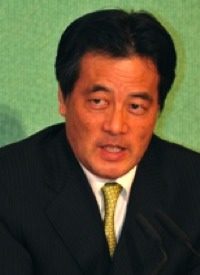
Japanese Foreign Minister Katsuya Okada announced on December 8 that his nation was suspending talks with the United States regarding the status of American military bases in Japan. A particularly difficult issue is the American military presence at Okinawa. Japanese citizens on this island, which is part of the Ryukyu Islands on the southernmost part of the archipelago, have complained that American military personnel increase the crime rate and create environmental problems.
These Ryukyu Islands were occupied by the U.S. military until 1972, when the Islands, including the Okinawa islands, were returned to Japanese control. A large American military presence has remained on Okinawa, with 22,000 military families. As is true generally with American military bases in foreign lands, the military personnel are a support to the local economy, but the military presence also can be the cause of conflict. And of course, maintaining military personnel in a far-away land also creates a burden for U.S. taxpayers.
Complicating the negotiations is the Ryukyu Independence Movement that advocates separation of the islands, which have been alternatively part of the Chinese and the Japanese empires. This movement opposes both the American military presence and the status of the Ryukyu Islands as a prefecture of Japan.
Another consideration is what the overall American military strategy ought to be more than six decades after the Second World War ended. More than 50,000 American military personnel remain in Japan, which has the third largest economy in the world, very advanced technology, and a robust democracy. The Republic of Korea, where many other American troops are stationed, has the fourth largest economy in Asia, and its fully functioning democracy has a population of about 50 million people. Should the United States really be providing defense for these countries, enabling them to spend less on their own defense budgets and devote more of their resources to their economic sectors?
Although the Republic of Korea (South Korea) has a very strong military, North Korea is moving steadily toward the acquisition of the ability to launch nuclear warheads at strategic targets in Japan. The Communist nation declared this June that it was proceeding with its enriched uranium program, and it has already launched intermediate range missiles, provoking alarm in Japan. North Korea has less than half of the population of South Korea and its economy is perhaps less than five percent of the size of the South Korean economy. The behavior of the North Korean dictator, Kim Jong-Il, has been increasingly erratic, and the reports of North Koreans who have escaped to freedom paints a very bleak picture of a highly regimented, desperately poor population that has almost no real understanding of the world outside the North Korean prison nation.
One final consideration in the decisions of the American and Japanese governments is the rising power of Communist China. Because of the enormous deficit expenditures of the American government, China owns vast amounts of American federal debt. The Chinese government, which alone may have the ability to curb Kim Jong-Il in North Korea, continues to try to combine a highly repressive government which does not allow freedom of religion or significant political liberty with an aggressive economy connected to politically-connected private concerns. Twenty years after Communist repression at Tiananmen Square, China seems no closer to casting off the heavy rule of the Communist Party than when students took to protest which was seen around the world.
But is the American presence in Japan reducing Communist China’s threat to America? More than 60 years after the United States defeated and occupied Japan, is it time to bring the troops home?
Photo of Foreign Minister Katsuya Okada: AP Images



